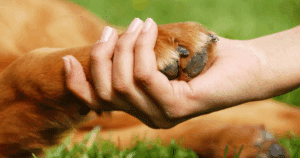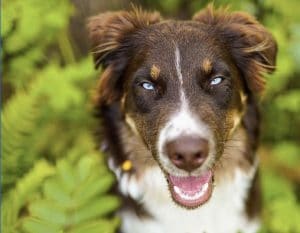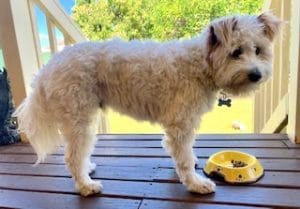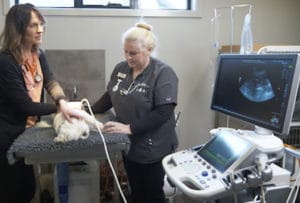

New Year’s Eve is a time of celebration with millions of people across the country enjoying the many fireworks displays that will light up our skies.
Unfortunately for the hundreds and thousands of pets that are exposed to fireworks during the Christmas and New Year’s Eve celebrations, and again over Australia Day, this is the most terrorising time of the year that results in a dramatic rise in dogs ending up in Vet emergency centres, animal shelters, or killed on our roads or in accidents as they try to escape the frightening sights and sounds of the fireworks.
It’s important to remember that a dog’s acute hearing makes him more sensitive to the sounds of fireworks than humans and, as they are sudden and occur infrequently, they can easily turn a normally placid pooch into a trembling ball of anxiety. This can be a very serious disorder, akin to a severe panic attack in humans, so to learn more about anxiety in dogs, click here.
Desensitising your dog to fireworks and thunderstorms as a puppy is the best way to ensure your dog will be unfazed by these noises later in life. However, this is not a short term fix and takes many weeks or months to do correctly.
I have still included some information about this should you have a new puppy for Christmas, so that you can use this time to prepare your puppy for a phobia free life as an adult dog.
If you are heading out on On New Year’s Eve and Australia Day when fireworks are aplenty, arrange for your dog or cat to stay somewhere safe and ideally with human company if they have a fear of loud noises or fireworks.
If your dog is crate trained then securing him in his crate inside the house with a chew toy or bone to occupy his time is a great way to ensure they are kept well out of harm’s way if you can’t be around when the fireworks are on.
If he’s not crate-trained, place his bed in a secure and familiar bedroom during the fireworks. Generally the main bedroom that is full of your smell will provide comfort and will enable you to block out the sounds with some of the noise blocking techniques mentioned further below
If you definitely can’t leave them in the house then make sure they have a protective kennel or area in the shed with a bed or blanket to keep them comfortable, warm and feeling protected.
If you don’t have a shed, then place their kennel close to the backdoor, under shelter and give them a bone or chew toy to keep them occupied. Make sure you leave them with plenty of water and, if the weather is hot, plenty of shade as well.
Vet emergency rooms often see an influx of dogs with road injuries as they escape in fear from their house or yard so ensure you escape proof your yard – you’ll be amazed how high a wall a scared dog can scale when trying to flee, so inward slanting lattice to help stop them getting over fences is a good option and remove any chairs or other objects they could use as leverage.
If you are able to keep your dog inside, then close all windows to the room they are being kept in, draw the curtains or blinds and play the radio or TV in that room and others in the house to create a lot of white noise. Be mindful of what TV station you are leaving on of course as you don’t want it to be the fireworks telecast!
If they are outside try what you can to mask the noise in the area you are keeping them contained in, such as playing mellow music on an outdoor radio. Ask neighbours to keep an eye on them, or ideally take them in to their home if they notice the dog is looking particularly anxious.
If you are at home with your dog during fireworks then it is important to remain calm and relaxed. We need to show them there is no danger, as they will be looking to us for reassurance.
We definitely don’t want to reinforce anxiety and their behaviour by making a fuss over them. Instead play a game of ball or tug if they love that, give them their favourite toy or a bone – something that creates a good/happy association that they can enjoy whilst the noise is going on around them. Find out more about how we reinforce anxiety in dogs here.
This is the same when desensitising a puppy to the sound of fireworks and thunderstorms, so start this process now if you have been given a puppy for Christmas. Click here to read a little more on desensitising a puppy to fireworks and thunderstorms.
Pheromone based collars, sprays and adapters you plug in the wall may also help some dogs with separation and other anxiety during the fireworks. Calming herb like chamomile, passion flower or valerian can also help, but you need to give these supplements time to kick-in. Rescue Remedy drops in their water may also help keep dogs prone to very mild anxiety, but for dogs with anxiety disorders, it is important to talk to your Vet about medication options to help address the problem properly.
Some dogs respond well to the use of a thundershirt, particularly if it is also combined with the calming herbs or pheromone products. The theory behind these is that they wrap tightly around them like they are being held or being cuddled, which can help reassure them. Visit your local PETstock store to get some advice or to purchase a thundershirt.
Many owners of dogs with behavioural issues can be hesitant to consider medication for anxious dogs, instead hoping training alone will help, or that their dog will grow out of it.
Unfortunately, training and behaviour modification on its own for dogs with higher levels of anxiety is rarely successful, as the anxiety actually prevents the dog from taking in new information, including how to be calm.
Medication for anxious dogs that are most frequently used include Fluoxetine, commonly known as Prozac, and also Clomipramine. These are longer term medications that take 6-8 weeks to work, so aren’t a short term solution to deal with fireworks, but are worth talking to your Vet about for your pet’s anxiety in the longer term.
There are also options for certain triggers or situations such as fireworks and thunderstorms. These short acting medications take between 30 to 90 minutes to work such as Clonidine and Trazodone, so can provide a short term and effective solution if you can get in to see your Vet.
It is important that you address any fireworks and thunderstorm phobias as early as possible, as it only gets worse as dogs age, and can cause severe mental anguish and stress, as well as extreme injury or worse.
About the Author: Lara Shannon is a certified dog behaviourist and trainer, pet food nutrition specialist, Executive Producer and Host of Pooches at Play on Channel 10 and editor of Poochesatplay.com. Lara also runs her own dog training business in Melbourne’s Bayside area and is the Author of World of Dogs and Eat, Play, Love Your Dog


Keeping your pet safe from Paralysis Tick





Get your paws on Lara Shannon’s best selling books ‘Eat, Play, Love (your dog) and World of Dogs.
Available in Australia, USA, UK and Canada.